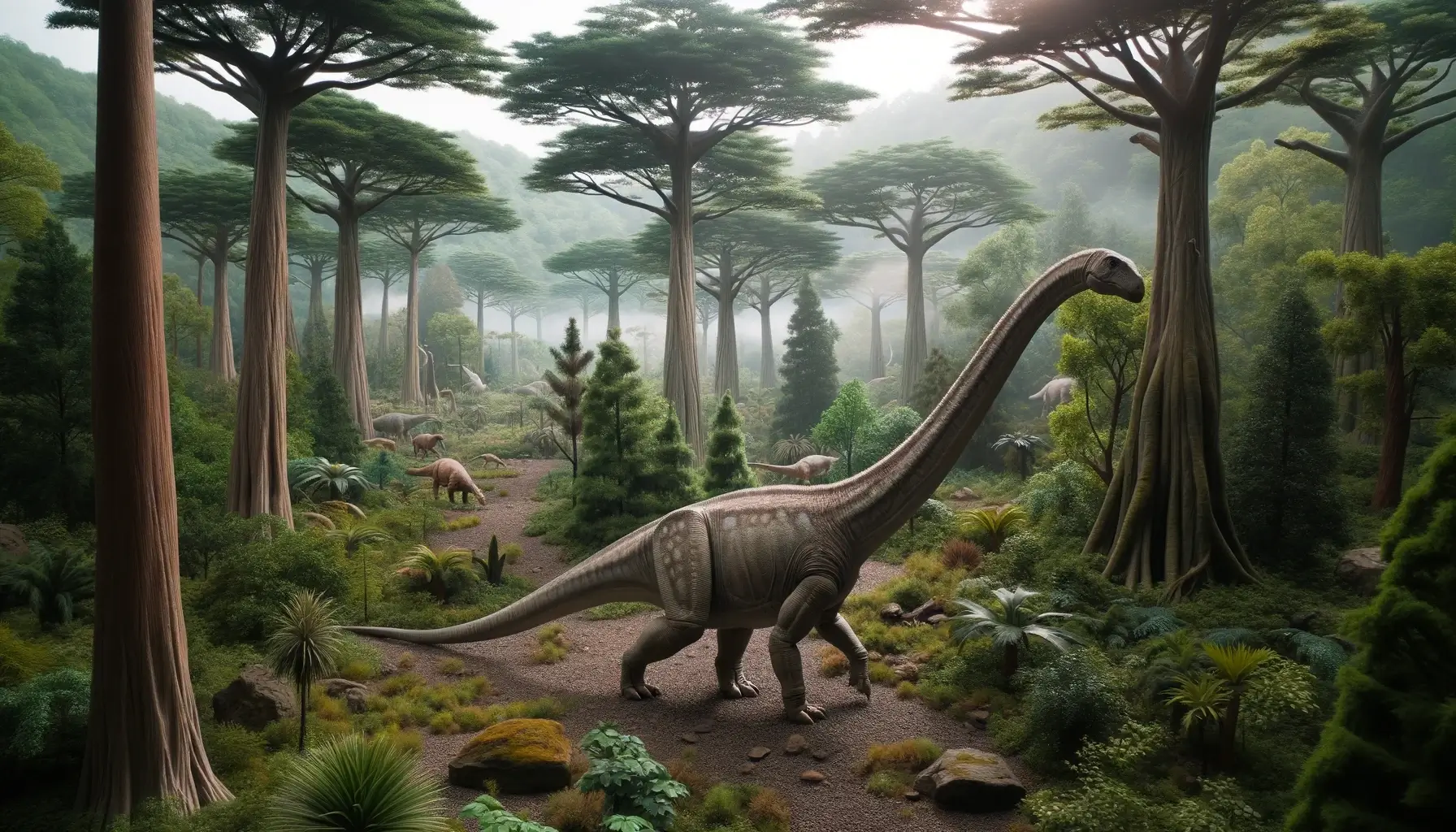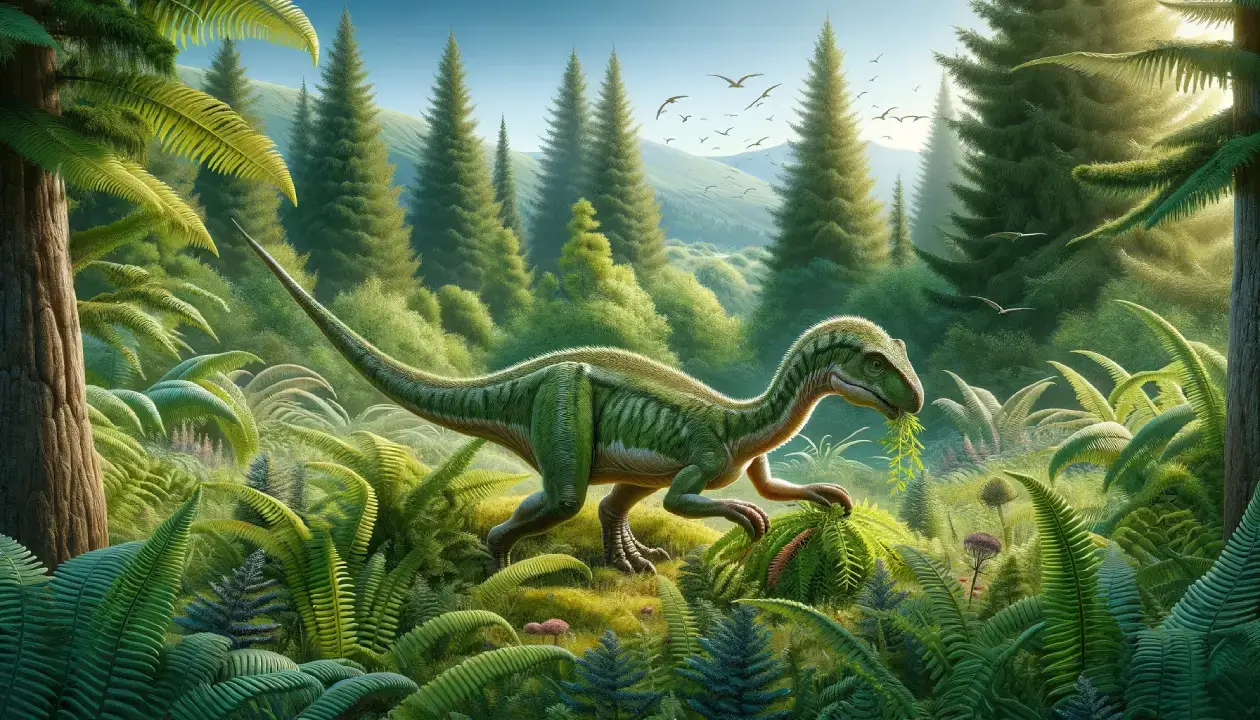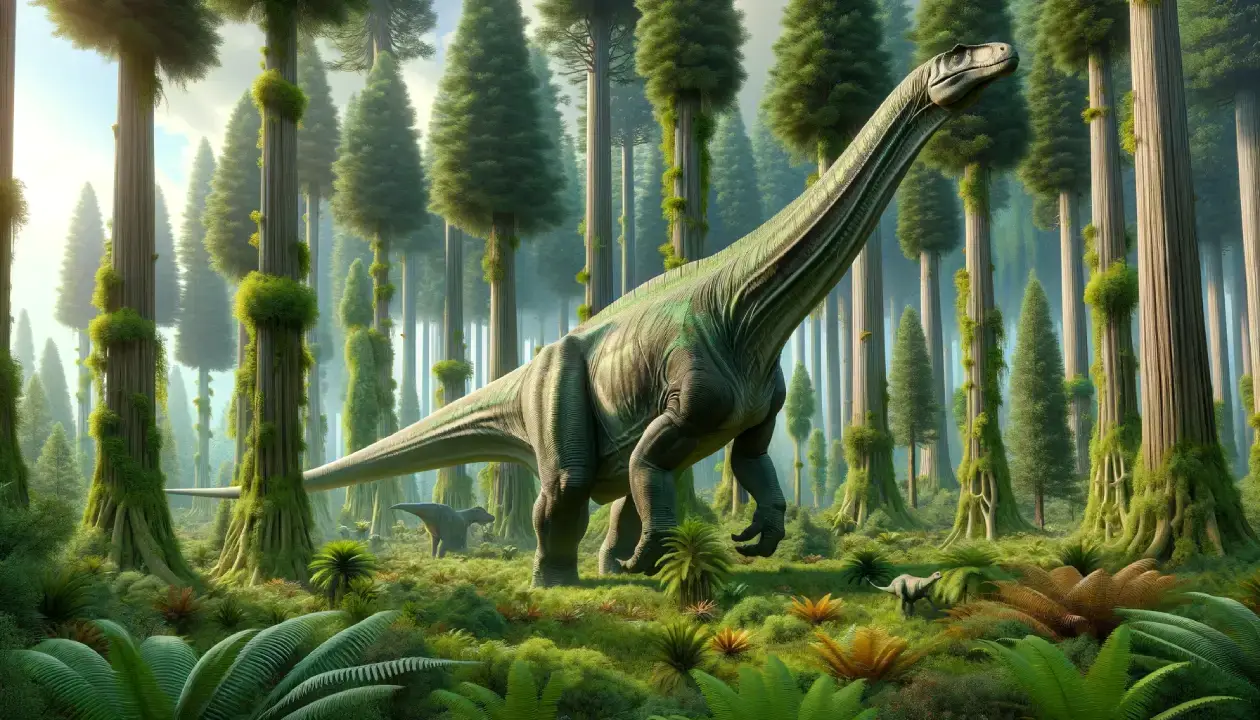Amygdalodon was a primitive sauropod dinosaur that lived in what is now Argentina during the Middle Jurassic period, about 180 to 172 million years ago. It was one of the first dinosaurs to be discovered in South America, and its name means “almond tooth” for its almond-shaped teeth. It had a long neck and tail, but also carried armor in the form of osteoderms. These were bony plates or spikes that covered its back and neck, and may have helped it defend itself from predators.
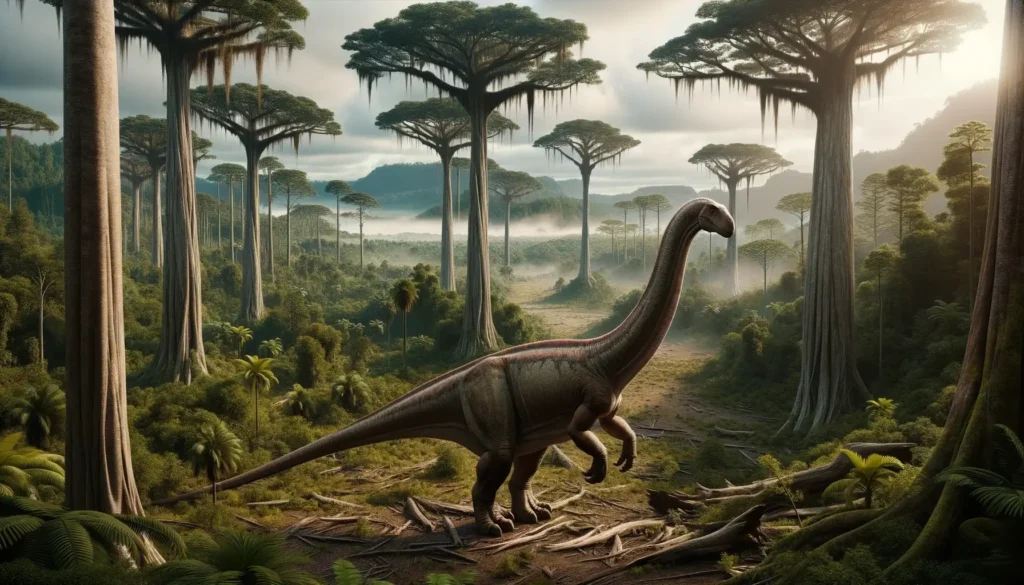
Basic Information
| Feature | Details |
| Time Period | Middle Jurassic, 180-172 million years ago |
| Diet | Herbivore |
| Length | 15 m (49 ft) |
| Weight | 5 tonnes (5.5 tons) |
| Size | Large |
| Posture | Quadrupedal |
| Locations | Argentina |
| Continent | South America |
| Type | Sauropod |
| Habitats | Grasslands, Floodplains |
Description of Amygdalodon
Historical Context
Amygdalodon was one of the first sauropods to be discovered in South America, and the oldest known from that continent. It was named by Angel Cabrera in 1947, based on a partial skeleton found in the Cerro Carnerero Formation of Chubut province, Argentina. The name Amygdalodon means “”almond tooth””, referring to the shape of its teeth. Amygdalodon is considered a basal sauropod, meaning it was an early branch of the sauropod evolutionary tree, and not closely related to the more advanced forms that dominated the later Jurassic and Cretaceous periods.
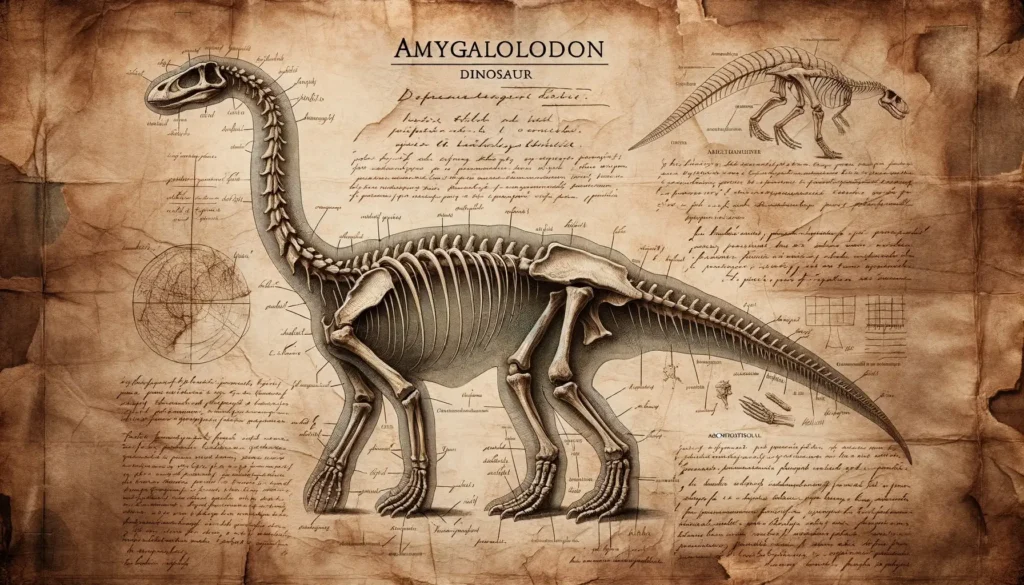
Physical Attributes
Amygdalodon was a large, quadrupedal dinosaur with a long neck and tail. It had a robust body, supported by four stout legs with five-toed feet. Its head was relatively small, with a short snout and nostrils placed high on the skull. Its teeth were almond-shaped, as its name suggests, and adapted for slicing through plant material. Amygdalodon had 13 cervical (neck) vertebrae, 12 dorsal (back) vertebrae, five sacral (hip) vertebrae, and an unknown number of caudal (tail) vertebrae. Its cervical and dorsal vertebrae had large cavities (pleurocoels) that reduced their weight and may have housed air sacs connected to the lungs. Its ribs were long and curved, forming a barrel-shaped chest cavity. Its pelvis and shoulder blade were partially fused to the spine, providing stability and strength for its massive body.
Feeding Habits
Amygdalodon was an herbivore, feeding on low-growing plants such as ferns, cycads, and conifers. It used its long neck to reach vegetation that was out of reach for other dinosaurs. It may have also used its tail as a counterbalance when rearing up on its hind legs to access taller plants. Amygdalodon had a simple digestive system, relying on bacterial fermentation to break down plant fibers. It may have swallowed stones (gastroliths) to help grind up the food in its stomach.
Unique Features
Amygdalodon had several features that distinguished it from other sauropods. One of them was its teeth, which were more suited for slicing than grinding, suggesting that Amygdalodon had a different feeding strategy than later sauropods, which had peg-like or spoon-shaped teeth for cropping and mashing plants. Another unique feature of Amygdalodon was its lack of certain vertebral modifications that are characteristic of more derived sauropods. For example, Amygdalodon did not have bifurcated (split) neural spines on its cervical and dorsal vertebrae, which are seen in most other sauropods and may have supported ligaments or muscles to hold up the neck and back. Amygdalodon also did not have camellate (honeycombed) bone structure in its vertebrae, which is thought to reduce weight and increase strength in later sauropods.
Movement and Speed
Amygdalodon was a slow-moving dinosaur, due to its large size and heavy body. It walked on four legs, using a columnar stance with straight limbs and upright feet. It may have been able to run at short bursts of speed, but not for long distances or sustained periods. It probably relied on its size and bulk to deter predators, rather than agility or speed.
Cultural Impact
Amygdalodon is not a very well-known dinosaur among the general public, as it has not been featured in many popular media or cultural works. However, it is an important dinosaur for paleontologists and scientists, as it provides valuable information about the early evolution and diversity of sauropods in South America. Amygdalodon is also significant for being one of the few Jurassic dinosaurs from South America that have been found so far.
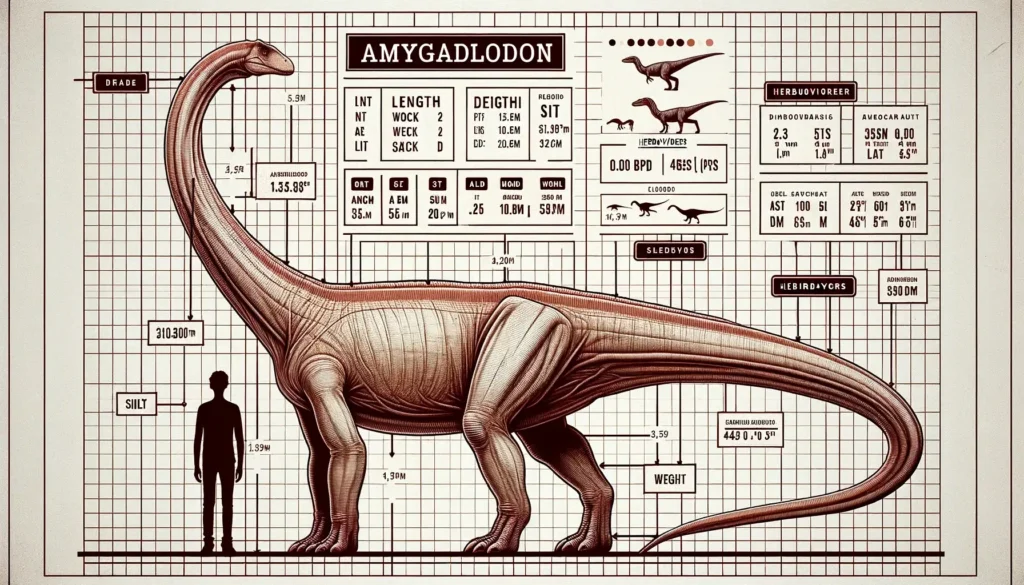
Interesting Facts
- Amygdalodon was named after its almond-shaped teeth, but it also had another meaning: amygdala is a part of the brain that is involved in emotions such as fear and anger.
- Amygdalodon lived in the same time and place as another famous dinosaur: Argentinosaurus, which was one of the largest land animals ever.
- Amygdalodon may have been related to another basal sauropod from Asia: Isanosaurus, which was also one of the oldest known sauropods.
Related Dinosaurs
- Isanosaurus: A basal sauropod from Thailand that lived in the Early Jurassic, about 190 million years ago.
- Gongxianosaurus: A basal sauropod from China that lived in the Middle Jurassic, about 175 million years ago.
- Volkheimeria: A basal sauropod from Argentina that lived in the Late Jurassic, about 150 million years ago.

